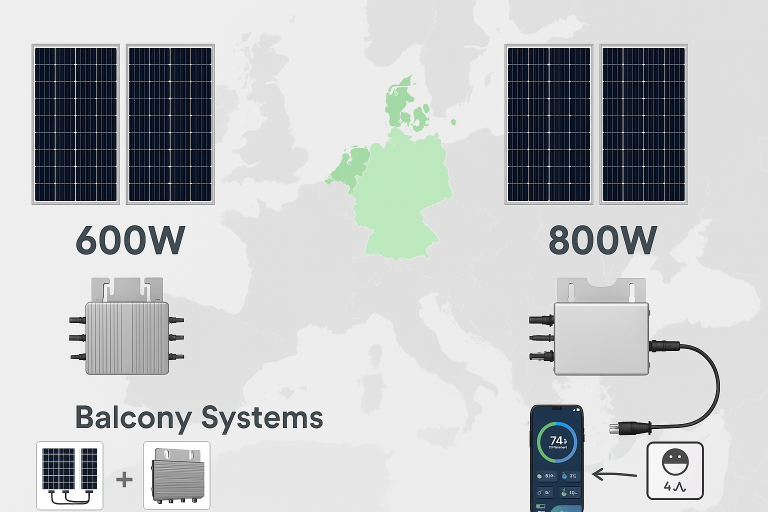
Introduction——
In the EU balcony solar market, the two most common system capacities are **600W and 800W**. Both are compact, efficient, and easy to install — but each has distinct advantages depending on **market regulations, energy goals, and consumer behavior**.
As a B2B buyer, choosing the right system for your region can make the difference between fast sales and regulatory hurdles. Let’s break down the key differences between 600W and 800W plug-and-play solar kits.
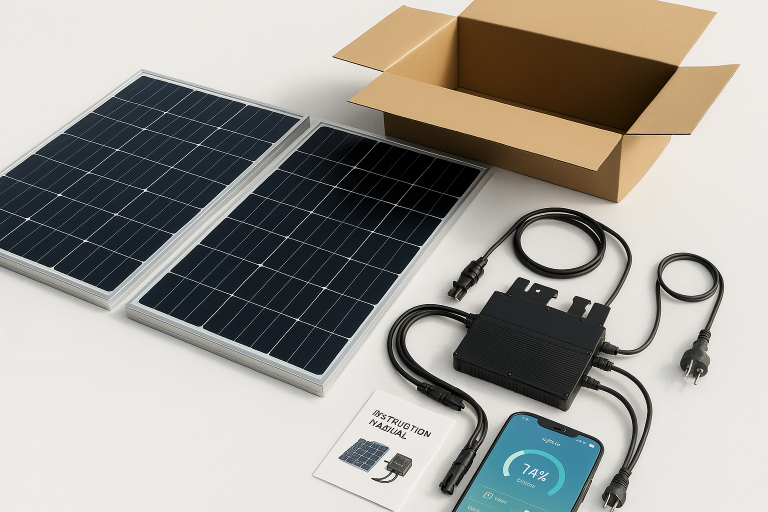
Introduction——
In the fast-growing balcony solar market, B2B buyers — from solar distributors and EPC contractors to OEM brands — are looking for **complete, certified, and easy-to-install systems** that offer both technical reliability and strong after-sales support.
Our **Plug-and-Play Balcony Solar Kits** have been deployed across **15+ countries** in Europe, with strong adoption in Germany, Austria, and the Netherlands. But what truly sets us apart is not just the hardware — it’s the **partnership experience** we provide.
Here’s why B2B clients continue to choose us as their **trusted solution provider**.
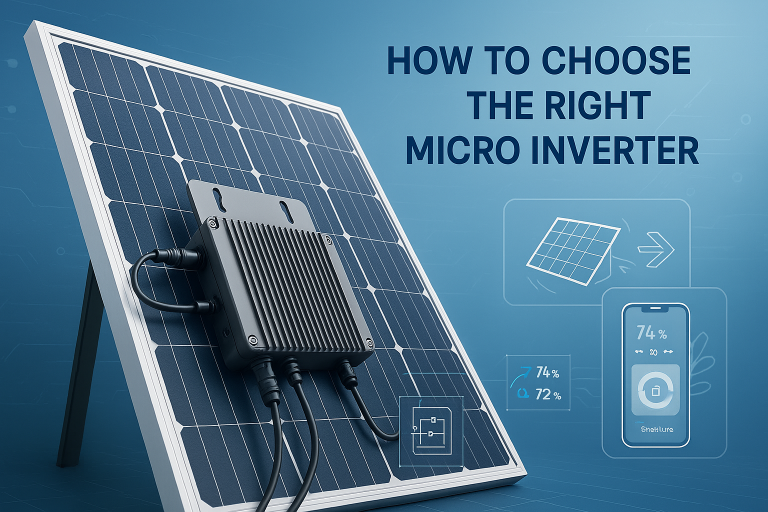
### **Introduction**
As balcony solar systems become increasingly popular in Europe and other high-density urban markets, **micro inverters** have emerged as the preferred choice for safe, scalable, and efficient power conversion.
Unlike string inverters, micro inverters are installed directly behind each solar panel, converting DC to AC at the panel level. This enables higher safety, individual panel optimization, and greater flexibility in system design — all critical factors for plug-and-play or modular balcony solar setups.
For B2B buyers such as distributors, EPCs, or PV kit assemblers, selecting the right micro inverter partner is essential for product quality, customer satisfaction, and long-term market success.
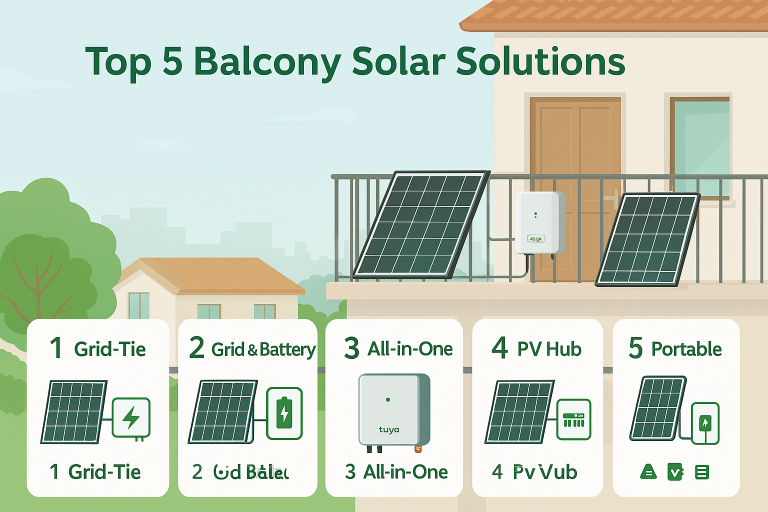
**Introduction**
As urban populations grow and energy regulations tighten, solar energy is becoming increasingly mainstream. In particular, **balcony solar power systems** offer an efficient and space-saving solution for apartments, rental properties, and small businesses—especially in Europe. For B2B buyers looking for scalable and ready-to-deploy solar solutions, choosing the right system configuration and supplier is critical to long-term success.
Here are the **top 5 balcony solar system solutions** that B2B buyers should seriously consider in 2025.
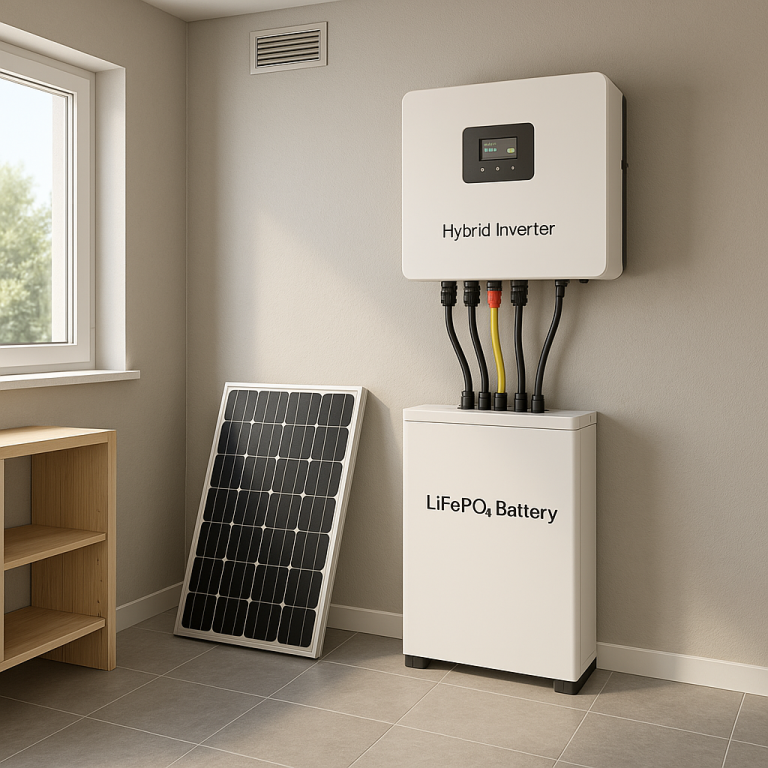
Introduction: Why Battery Care Matters.
Solar batteries — especially LiFePO₄ (Lithium Iron Phosphate) — are a game-changer for homeowners seeking energy independence and grid backup. But like any technology, improper use can shorten their lifespan, reducing your return on investment.
Proper usage and maintenance can ensure your battery lasts 10–15 years or longer.

Introduction: Why More Families Are Going Solar.
In the face of rising electricity bills, growing climate awareness, and accessible green technologies, many families around the world are turning to solar power. But what does this transition actually look like in real life?
Today, we share the real journey of the Schneider family from Germany — a typical household who made the switch to solar and what they learned along the way.
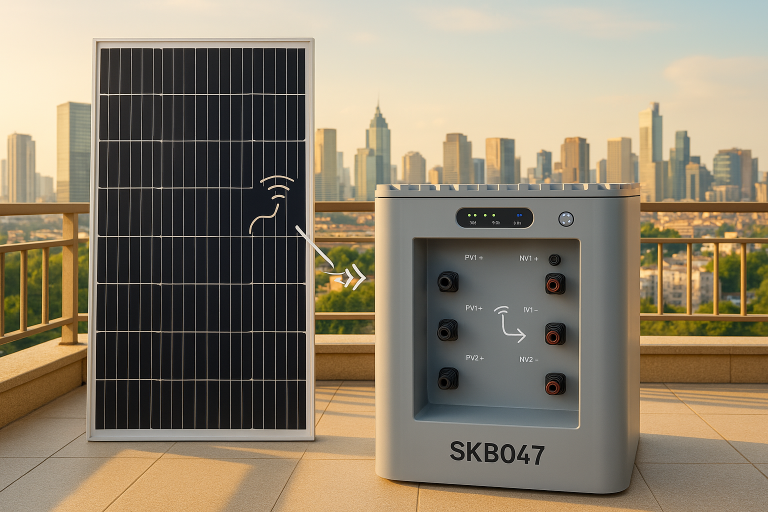
This article provides an in-depth look at the intelligent charge and discharge management strategy of the TUYA Balcony PV Energy Storage All-in-One (SKB047). It explains how solar generation, battery charging, micro inverter output, and grid consumption seamlessly work together. With self-check and automatic battery activation features, users can avoid battery undervoltage issues and easily manage common faults. Additionally, the app-based remote monitoring and power flow adjustment enable optimal use of solar power while keeping the system safe and stable.
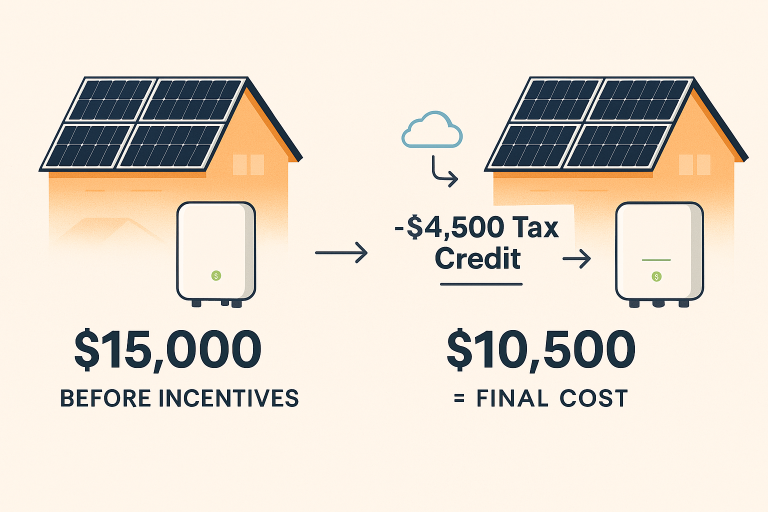
Introduction: Why Government Incentives Matter
Installing a solar power system is a long-term investment. But with the right government incentives and tax benefits, you can reduce upfront costs by 20–50% or more — making your transition to clean energy faster and more affordable.
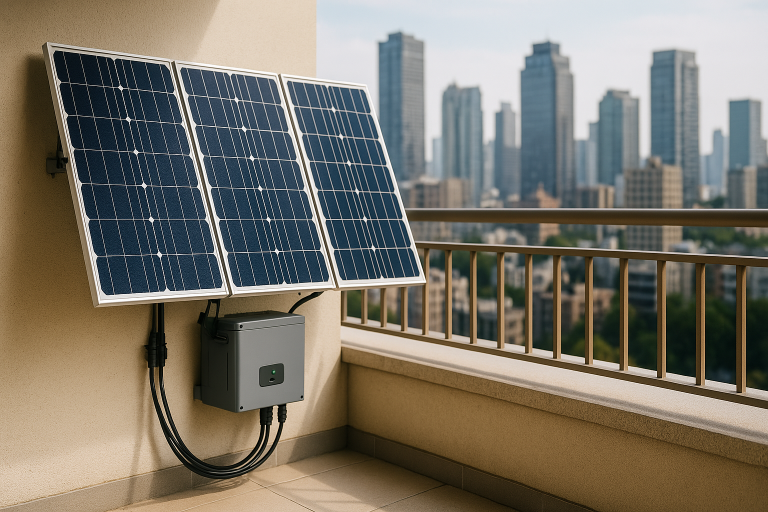
Introduction: Why “Small Solar” Is in Big Demand
With rising electricity costs and growing interest in sustainable living, many homeowners — especially those in urban areas or apartments — are asking:
“Can a small solar system really power my whole house?”
The answer? It depends — on your energy habits, available space, and the system’s design.
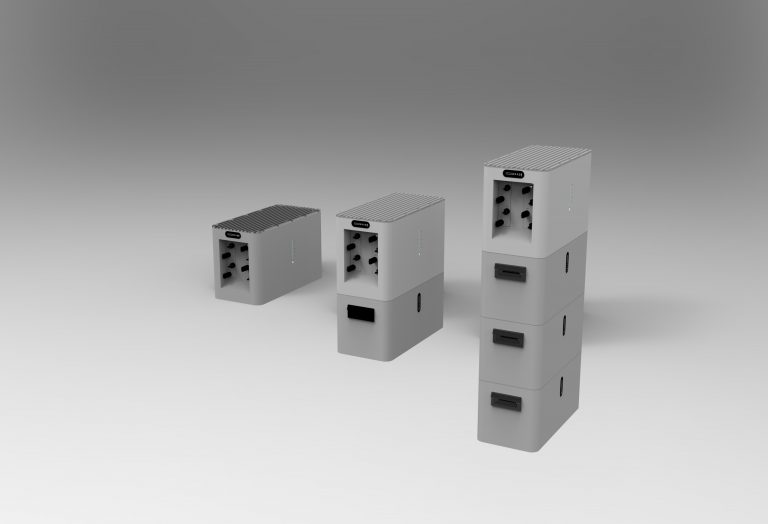
This article provides an overview of the TUYA Balcony PV Energy Storage All-in-One (SKB047), detailing its product structure and quick installation points. Combining a battery, PV control module, and micro inverter into one device, it offers a plug-and-play solar generation and storage solution. The article highlights rapid deployment methods in balconies, courtyards, and rooftops, along with easy operation via MC4 connectors and app-based remote monitoring. Users can conveniently handle everyday solar generation and storage, with the option to expand capacity by adding additional battery packs as needed.










